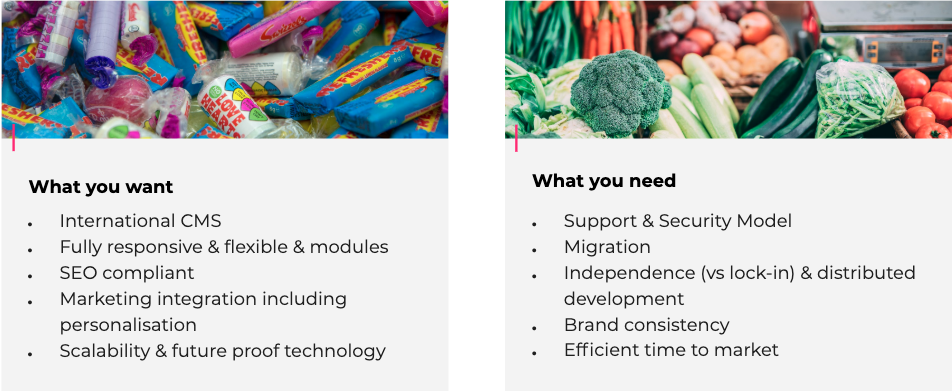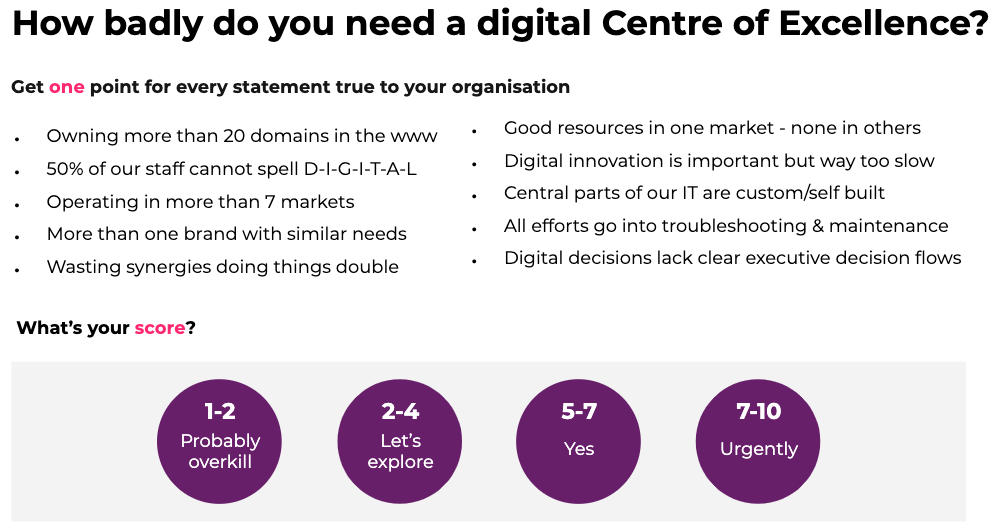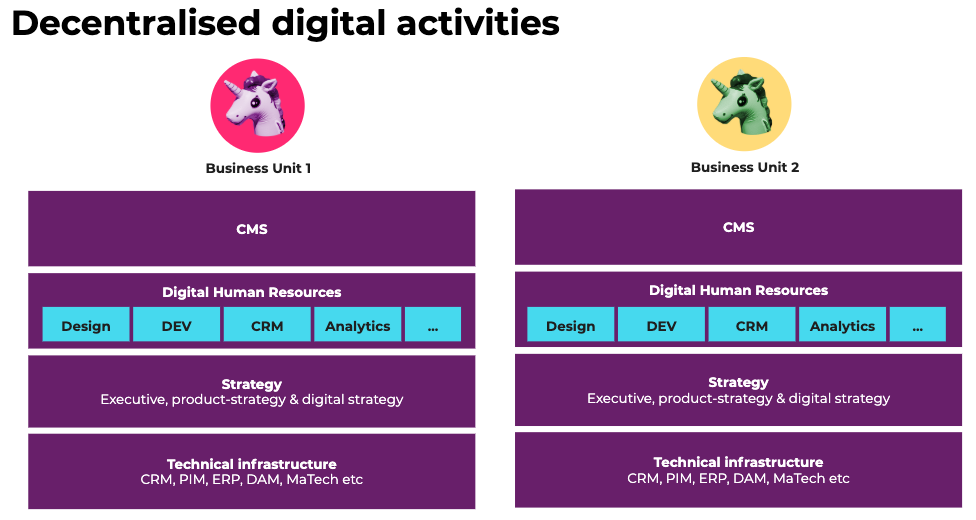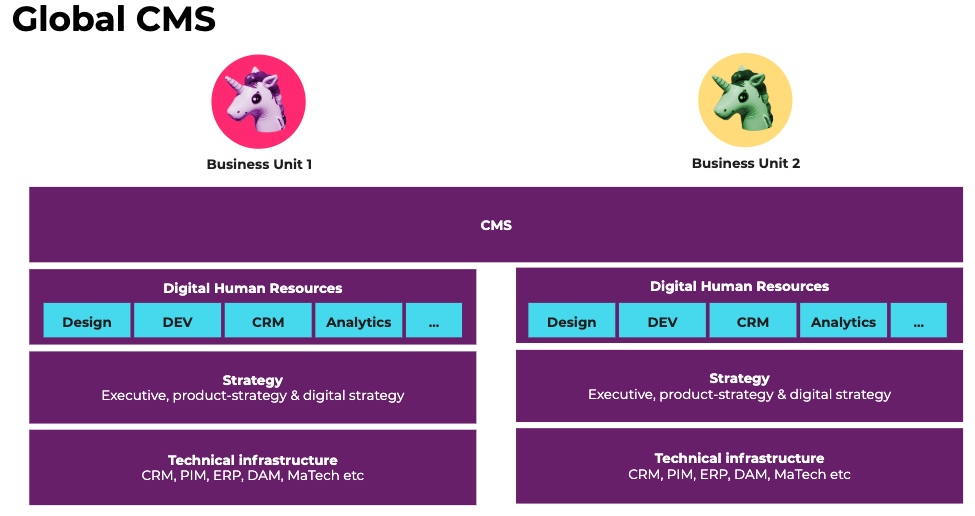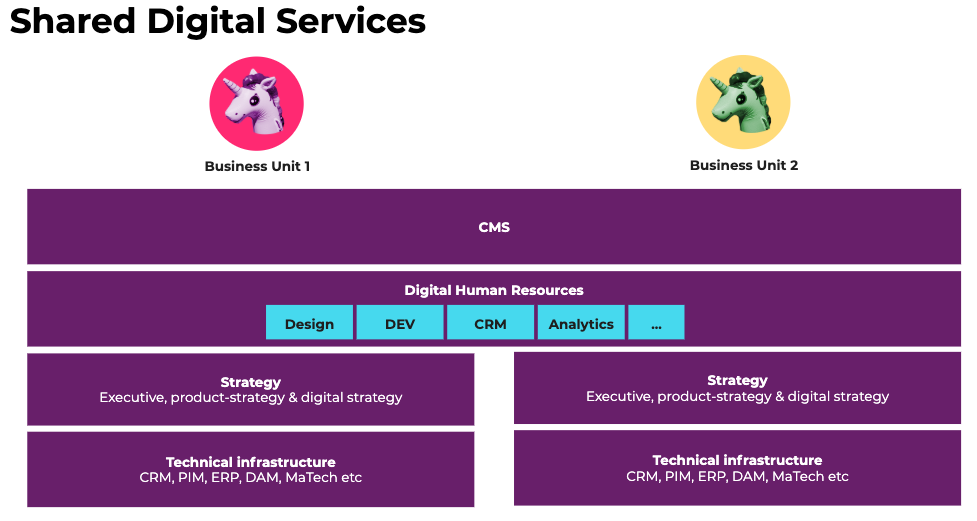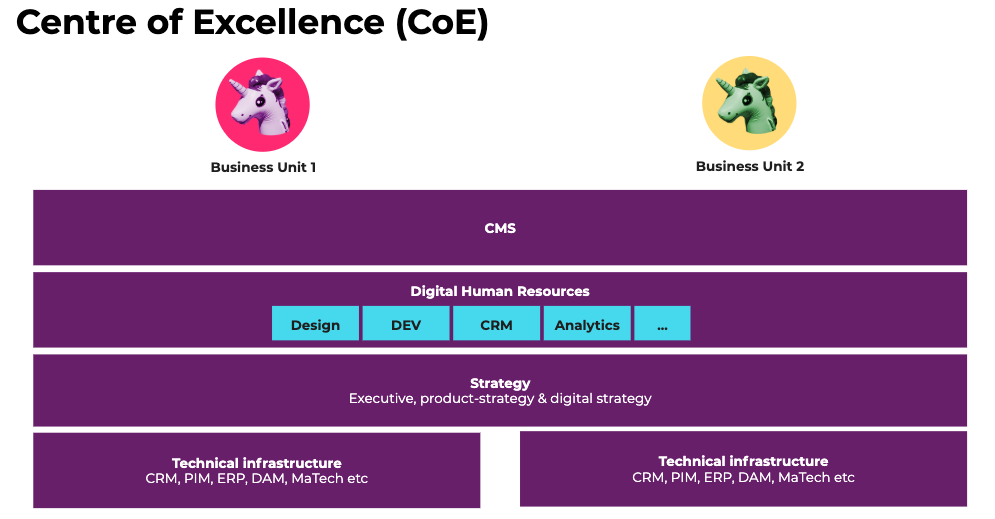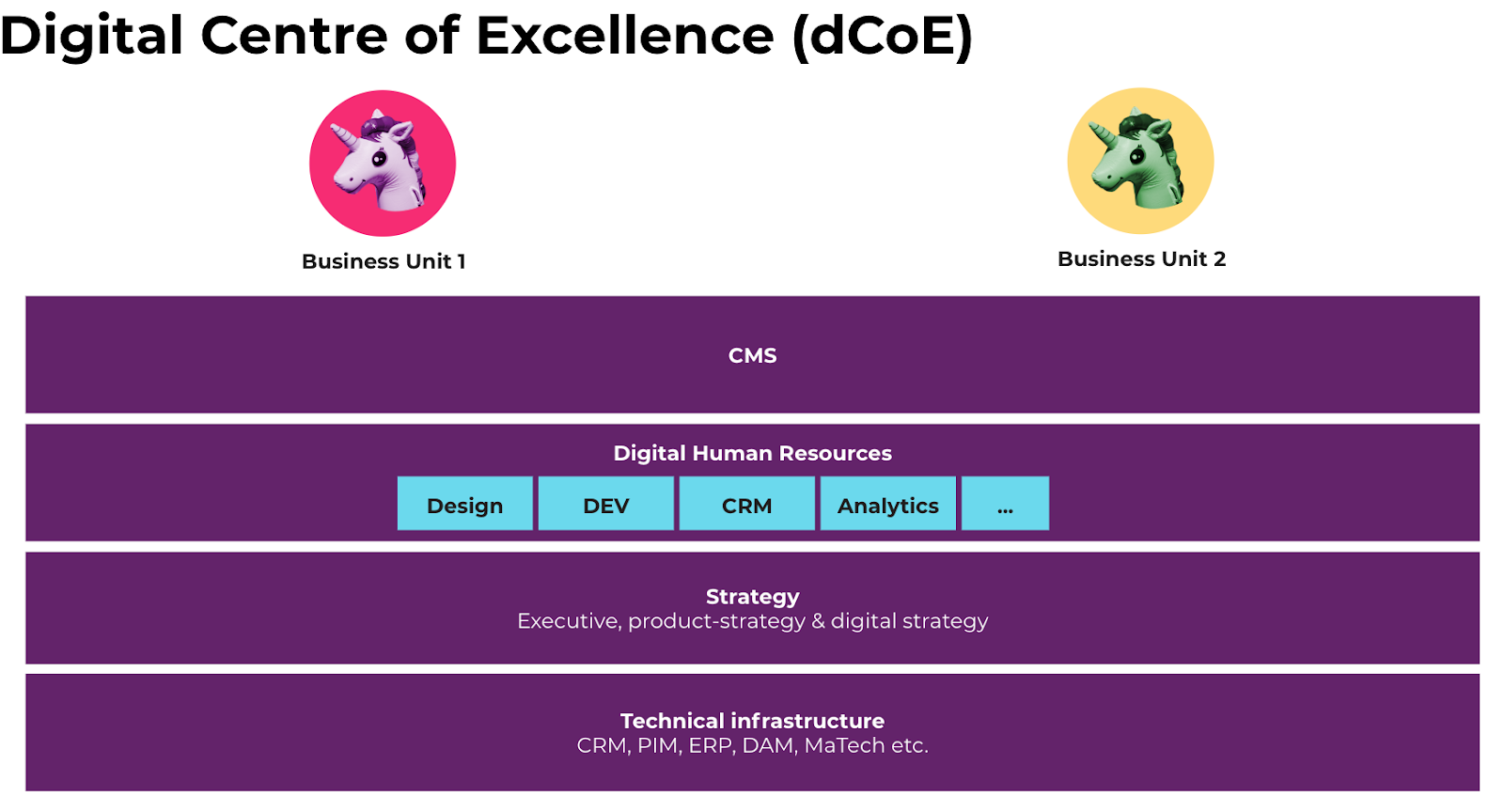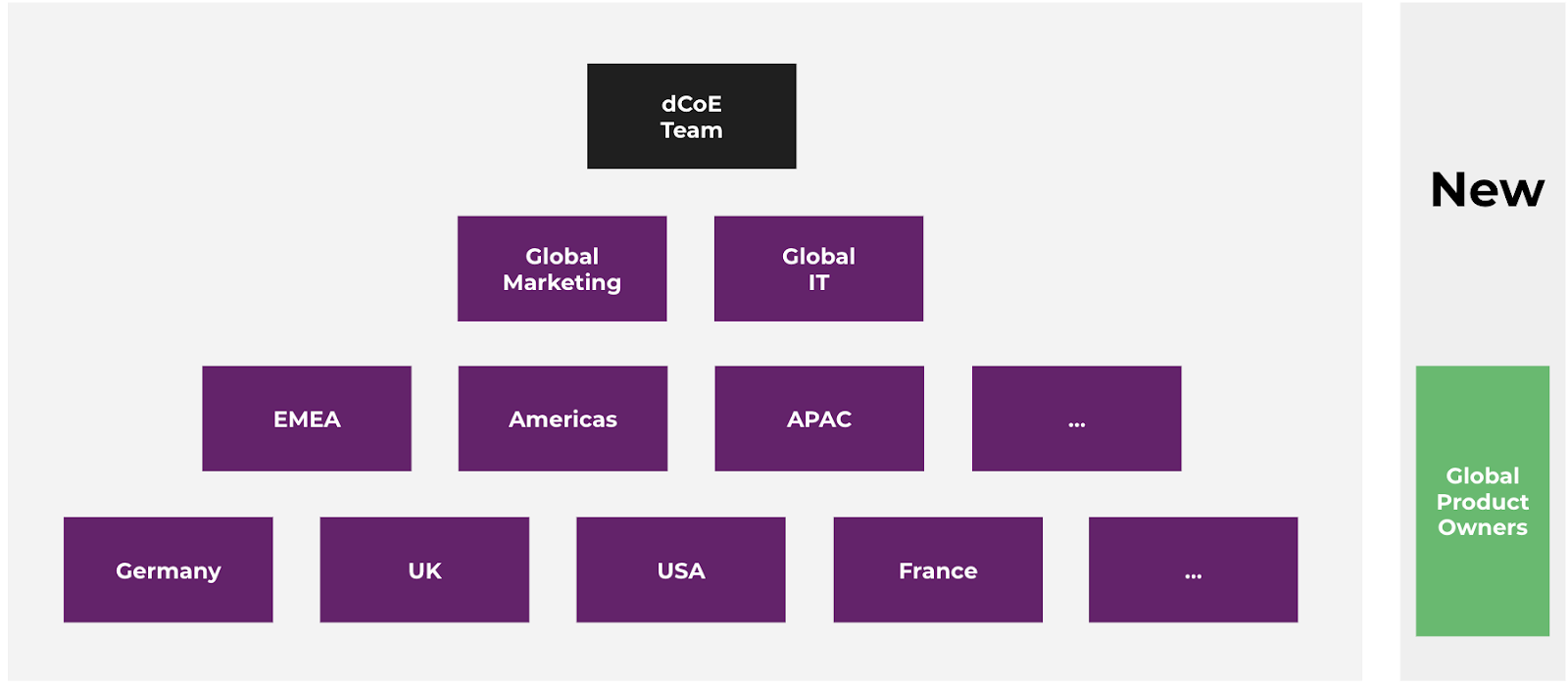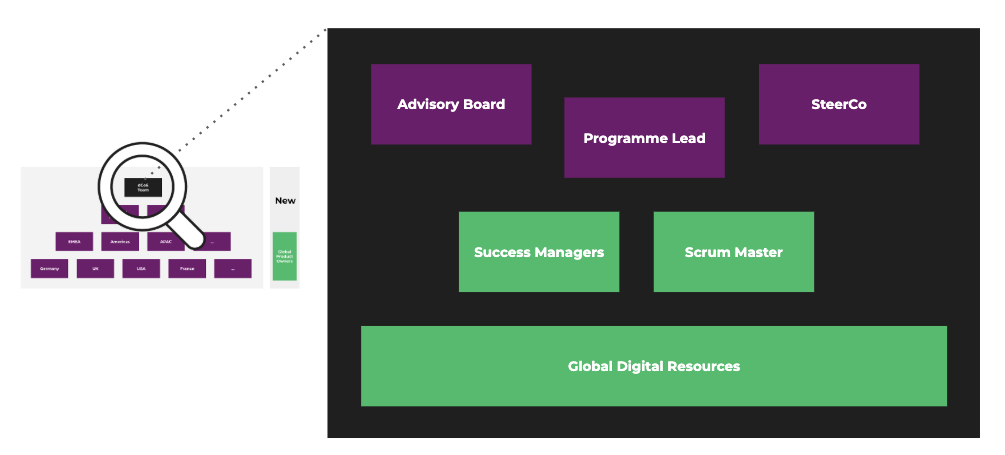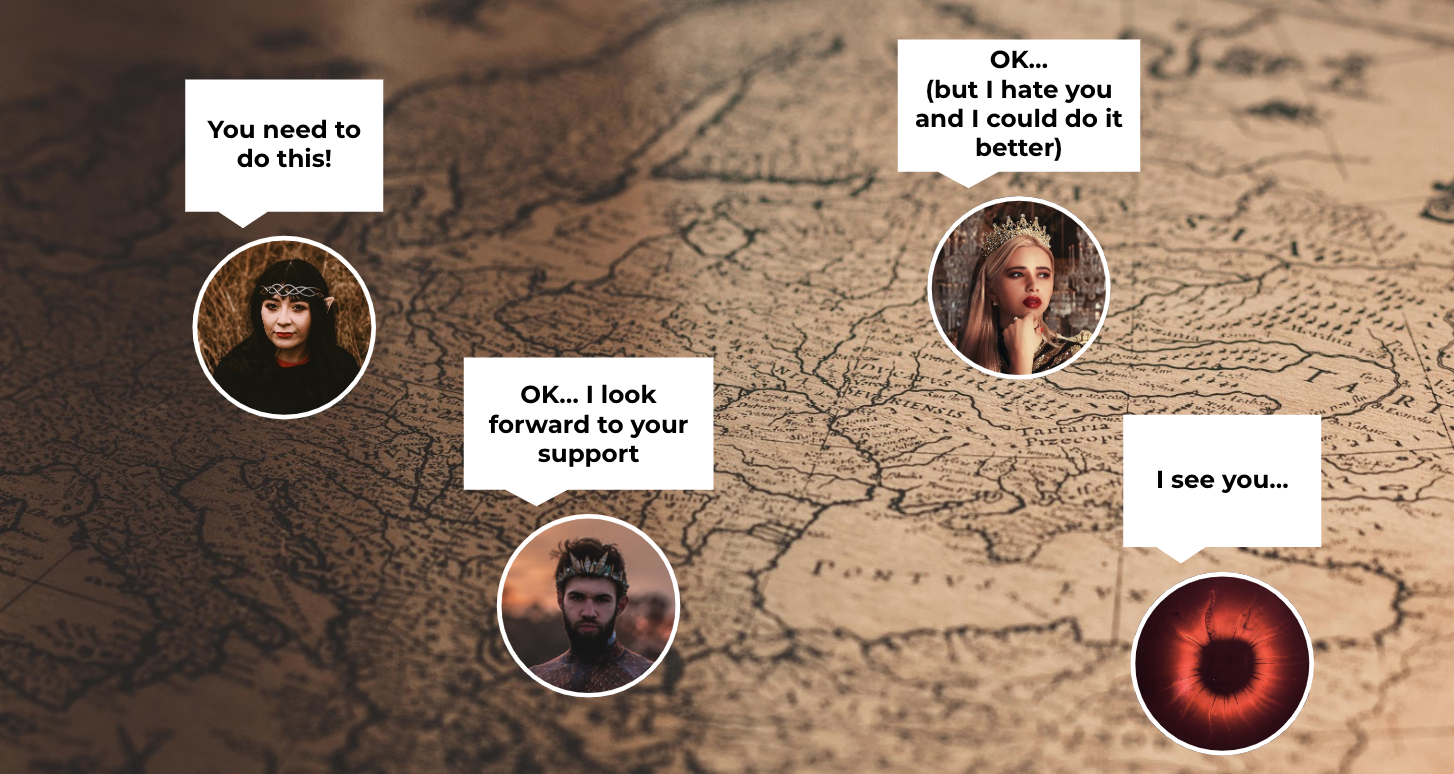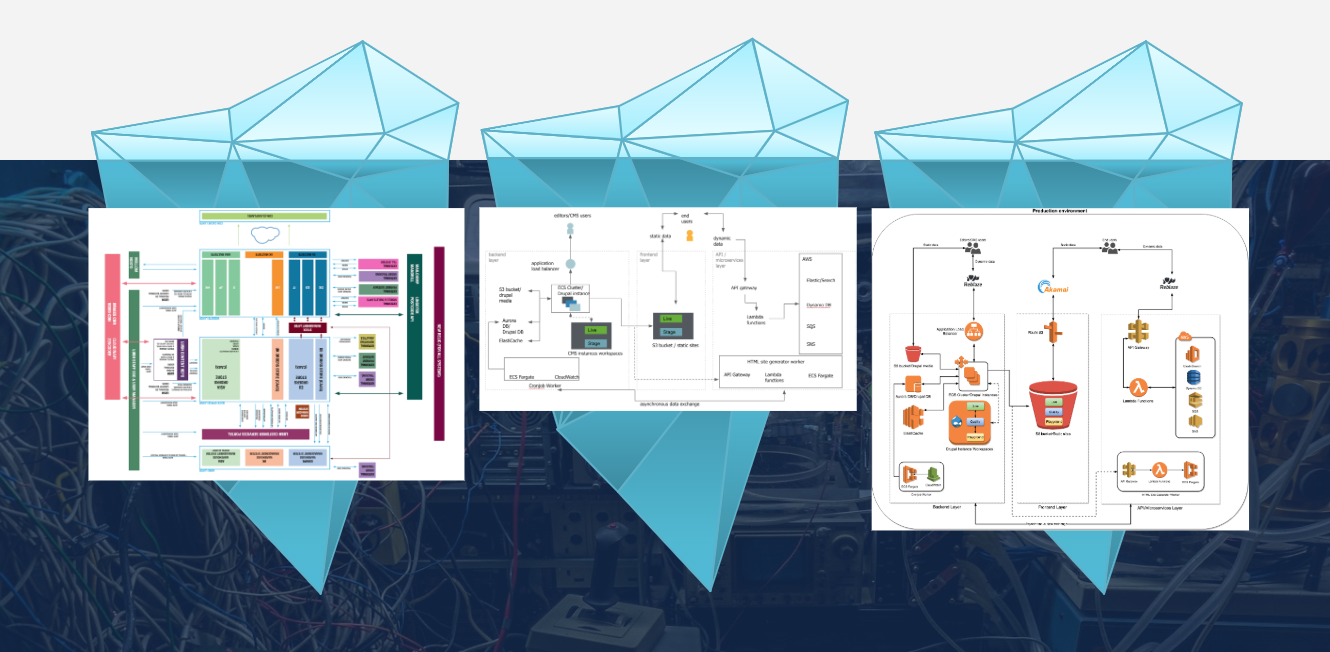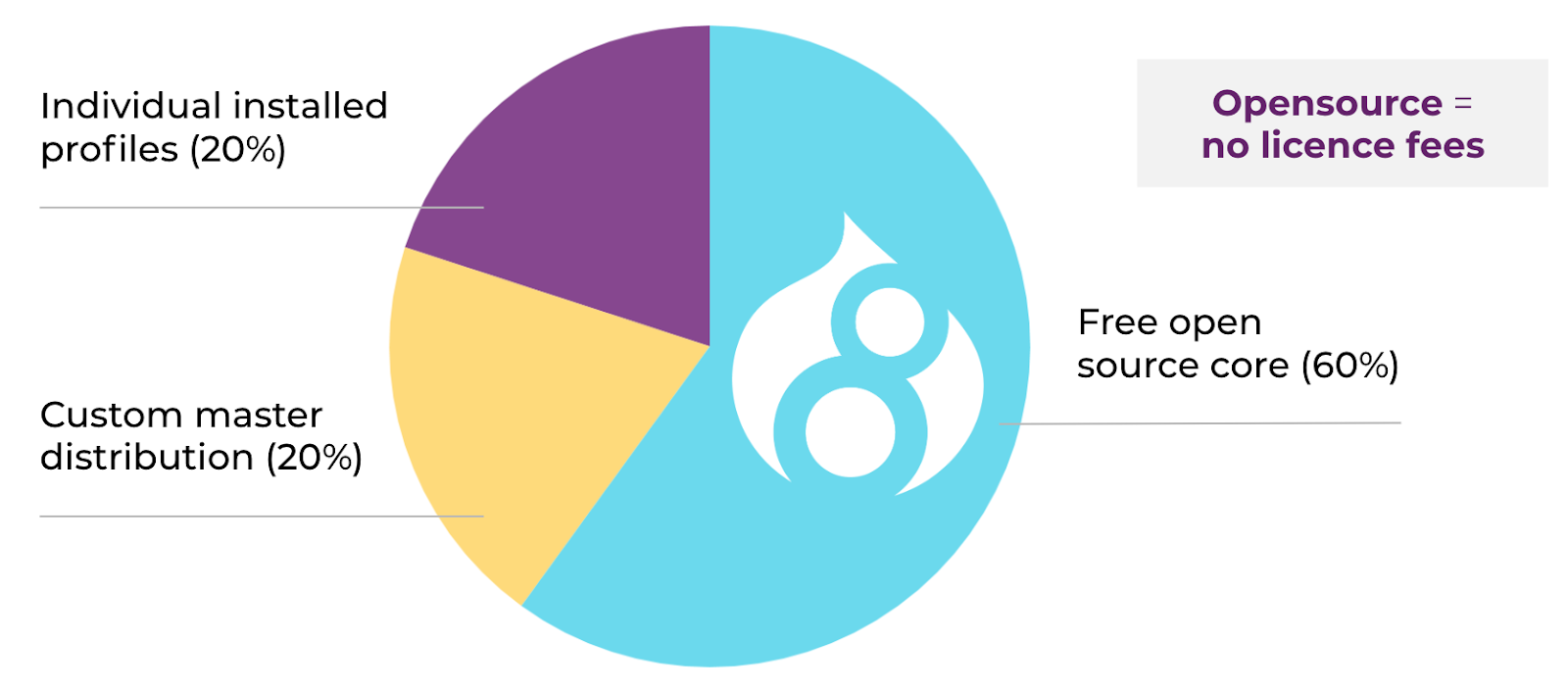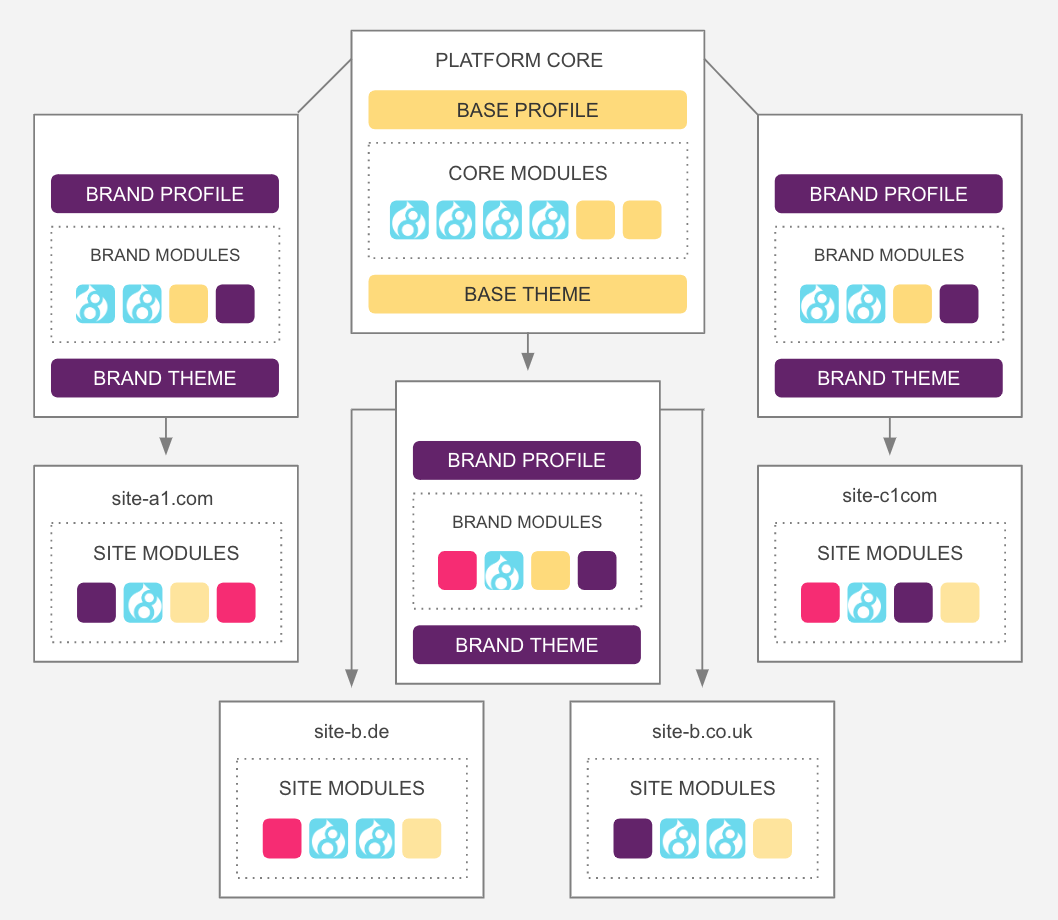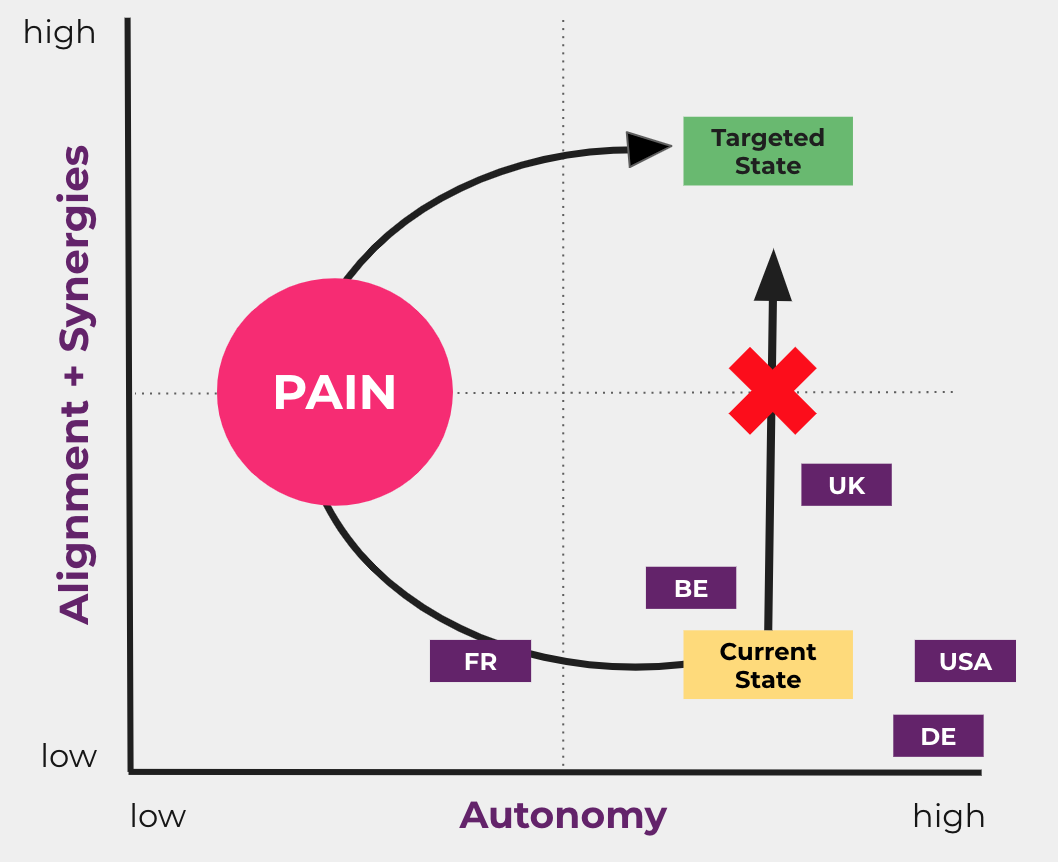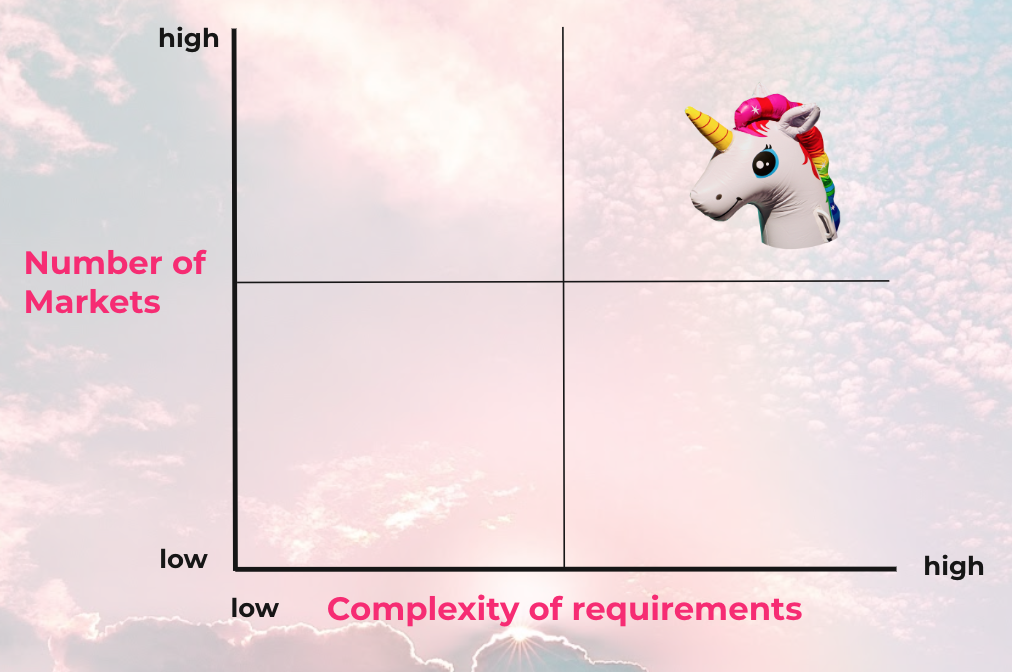
Recap of DMEXCO 2019 Talk: Digital Centre of Excellence
Pursuing the approach of creating a digital Centre of Excellence (dCoE) is the 5-star-discipline for enterprises with multiple markets, a vast number of brands, and a megaton of requirements. We, from FFW, will share our recipe for creating a successful digital Centre of Excellence for multi-market companies, utilising the Drupal 8 CMS framework.
Recipe for a successful digital centre of excellence for multi-market companies with Drupal 8
What’s the talk all about?
FFW shared the lessons learned from the success stories of our clients and gives impulses to implement a digital Centre of Excellence in a multi-market set-up.
The recipe for success is based on a centralised CMS platform solution such as Drupal 8 (FFW’s preferred choice) with installation profiles for several locations, regions, countries and brands. In this way, a strong and homogenous IT architecture can be established on a global level while the user experience in the local markets can be improved. On the other hand, the organisation needs a team set-up that spans a clearly defined bridge between local and central decisions, roles and processes.
Why did we pick this topic?
From a technological perspective, the possibilities are almost unlimited. The biggest blocker to success, however, is insufficient communication. In fact, 57% of all digital projects fail due to lack of proper communication (measures). Geographical, cultural and linguistic barriers exacerbate this problem. Therefore, it is necessary not only to examine a large digital project focusing purely on technological aspects, but also to precisely define the organisation and the roles and processes within it, to turn the 57% failure rate into a 100% chance of success.
Pursuing the approach of creating a digital Centre of Excellence (dCoE) is the 5-star-discipline for enterprises with multiple markets, a vast number of brands, and a megaton of requirements.
Would your organisation benefit from a digital Centre of Excellence? We from FFW will demystify the term digital Centre of Excellence, share our recipe for creating a successful digital Centre of Excellence for multi-market companies, utilising the Drupal 8 CMS framework.
This blog article is based on the talk given on September 12th, 2019, at 14:40 at DMEXCO in Cologne, Germany.
Starting point for digital Centres of Excellence
Analyse if it makes sense for you to start a dCoE and understand that you are not unique in your challenges as a multinational organisation with complex digital requirements. However, FFW challenges you to translate your fancy requirements to business value drivers and think of a dCoE, not as a simple project, but a holistic organisational concept with a purpose. Out of many purposes the initiative of a dCoE can be founded upon the most common are: reduce costs, get innovation going and have the right resources.
While putting people into a certain box is not ok, we believe it's fine to do this with organisations. This is why we use this simple quadrant graph below for organisations to map themselves. Are you one of the unicorns in the top right corner? And you think you are alone with your big, complicated set-up? Well, FFW has good news for you: You are not alone.
Assuming you have a complexity of requirements in a multi-market set-up, the next question is:
What are you looking for?
Throughout DrupalCon Events and many client conversations we found out what you want is not always what you actually need.
As we will explain in more detail in the next section, before starting a dCoE approach, the mindset of an organisational shift needs to be adapted. Things would be nice and easy to just go to a shopping mall and buy the ingredients, but you actually need to set up the kitchen and teach the chefs and the rest of staff before your first meal is served. On a branding level, a dCoE is an internal initiative which requires a holistic concept with a clear purpose. We have used Simon Sineks “Why, How, What” to give you food for thought on what might work as the brand and positioning in your organisation:
Why a dCoE:
- We are focused on what matters to us, not our customers (inside out) and need to change that
- We all live in a hyperconnected digital world - driving tech & touch
- We want to become a better organisation at scale and stop reinventing the wheel
- We need to ensure we’re based on future-proof technology and stay ahead of competition
- We want to be driving success in the future - foster an innovation ecosystem and make time for it
- We want to leverage the larger country knowledge to smaller markets
How a dCoE:
- Seamless experience across all channels and devices globally
- Enable all countries to leverage digital products - change of mindset & thinking
- Customer-experience-driven throughout all projects with clear methods to ensure this
- Drive conversions - building on best-practice and sharing innovative ideas
- Join together to work faster and more effectively
- Less budget spent on maintaining same digital experience, not getting it better
- Invest in digital: leading instead of following the digital market with security by design and state-of-the-art technology
What a dCoE:
- Central unit responsible for all things digitally
- A way of work that allows the platform to function and grow with clear processes and standards with a clear innovation process
- Creative & technology resources for the implementation of new things
- Digital marketing specialists working to improve the platform
- Global analytics teams helping local markets to benchmark and learn
- A global backlog of enhancements and bug fixes - shared learnings and experience
- Technology platform for our consumers with training, policies & documentation leading to a safe and performance-driven digital platform
- Web & app & intranet are one team
Because these are many thoughts, here is a simplified version you can use in your elevator pitch: Stop burning money, get the innovation carrot dangling which all managers are longing for and secure your best people for the right roles.
To sum up the starting point of a digital Centre of Excellence, we created this little quiz for you. What is your score?
What actually is a digital Centre of Excellence
The definition of a dCoE is based on an organisational unit, so it is actually not a thing, but people. A dCoE connects the business units for the topics of CMS, technical architecture, digital human resources and strategy and can have different forms depending on the focus and details of the construct of the dCoE. Inside the centre, it's about politics as well as agile implementation team. When ‘local kings’ need to work together it can feel like Lord of the Rings.
Definition of a digital Centre of Excellence
The best definition FFW found was “Centre of Excellence (CoE) is a team, a shared facility or an entity that provides leadership, best practices, research, support and training for a focus area. A digital Centre of Excellence (dCoE) supports the digital customer journey. “(according to Matech Today)
Different names … similar meaning. As we established, each organisation finds their own brand and purpose focus - and also name. digital Centre of Excellence, Centre of Excellence, Digital CompetenceCentre, Global Digital Hub, Central Digital Solution Hub, Global Digital DeliveryCentre, Central Web/App Team (please let us know if you have any more for this list).
Different names can also take effect because of the focus of the dCoE. FFW developed the following framework to establish more appropriate terminology which can be shared within the industry:
Do you agree with our terminology?
What to do to make dCoE set-up functional
The biggest blocker to success in digital project is insufficient communication. In fact, 57% of all digital projects fail due to lack of proper communication (measures). Geographical, cultural and linguistic barriers exacerbate this problem. Therefore, it is necessary not only to examine a large digital project by focusing purely on technological aspects, but also to precisely define the organisation and the roles and processes within, and to turn the 57% failure rate into a 100% chance of success.
To avoid this pitfall, a clear central unit is essential. The organisation needs a team set-up that spans a clearly defined bridge between local and central decisions, roles and processes. So basically, the dCoE sits on top of all countries, regions and global marketing and IT. In most of our cases the team of the dCoE actually was staffed with employees from the global marketing and IT teams bridging the topics that are relevant to both of those teams.
Another important factor is the organisational shift to global product owners - basically local decision makers will have one person to direct all product questions to - this will look different for every industry and market - from very centralised to just a peer-meeting structure - but it is important that one person can make strategic calls when it comes to the global platform.
Zooming into the actually dCoE team there is a layer of implementers (success managers, scrum master and global digital resources) and a rather political layer (programme lead, advisory board and steering committee). At the core the programme lead - in the best case this is not only one person but at least two or three. The advisory board helps the programme leads and prepares big decisions before they are presented to the steering committee consisting of high-up management with budget decision power. On the implementation level success managers are critical to liaise with the markets and a scrum master to manage all the digital resources.
Behind this organisational chart is a layer of politics worth mentioning. In fact, it can feel like you become a character in Lord of the Rings - each working with their territory and their unique attributes, and most likely not everyone in favour and disagreeing with some decisions. But more of that in the lessons learned below.
Technical Aspects of digital Centres of Excellence
To avoid a Titanic moment a crucial success next to the organisational aspect is technology. A dCoE is working on the iceberg underneath the surface. A clear global technology architecture combines many components but needs to be strong in integrations. The CMS is only one element of the technical architecture. At FFW, we focus on Drupal 8 as it is open source and easily usable for multi-site architectures meaning that one standard platform with a multi-site approach can still have varieties per market/brand installation. From a technological perspective, the possibilities are very close to being unlimited and evolving with new technology advancements such as Drupal 8.
Underneath the iceberg
Firstly, unknown interfaces are the nightmare of every technical solution architect. A platform does not perform better than its weakest link. Dysfunctional system components without up-to-date interfaces are cost drivers, risk factors and innovation blockers. Main pitfalls are: CRM, intranet, DAM, ERP, PIM, own peripheral systems and marketing automation.
Secondly, unknown data structures can be lacking a logic as they have grown organically from internal processes and workflows that are no longer applicable and not scalable to other business units. Globally, different political aspects on who decides what including user management, roles and permissions can make a simple project into a maze no one can escape or get to where needed.
Long running projects often suffer from technical debt. Technical debt manifests in many ways such as outdated processes, work-arounds, technical formats from the 90s, undocumented functionalities. Like any other form of debt, it represents risk taken for a benefit in the short term.
However, the longer it takes to address it, the more value it will require to be paid back. A prime example of this is custom software. Many businesses often think that creating a custom solution will serve them better in the long term, but the reality is that most organisations fail to understand the total cost of ownership for a particular technology. They often then find themselves with solutions that are too expensive to support and maintain and cannot scale, which effectively turns them into bottlenecks for the business.
Solution: dCoE builds a central tech architecture globally and across brands
If you start a dCoE you are committing to the fact that technology is an important success factor. This means to dedicate time and budget into aligning the architecture globally. And we encourage organisations to be realistic with their internal processes - allowing only three months project time for a big one might not be possible.
Sounds complex? We are lucky to share examples with you - but be aware this will look different for every organisation. Below are three examples of technical architectures we have created:
As such, we want to focus on the CMS which is only one element of this architecture - however, a crucial one, as it connects to most other elements.
Next to the architecture comes a defined development workflow including modern deployment methodologies that make deploying new features live smoother and easier, essentially leading into lowered infrastructure costs feature synergies and hosting and maintenance synergies.
How does a global / multi-site CMS work?
FFW focuses on Drupal 8 as its multi-site ready CMS framework allowing global structures to be installed. Basically, the CMS is built on different levels which is based 60% on free open source core, 20% on the custom master distribution which is relevant for all business units and finally 20% on individual installed profiles. For example, it could be possible that Denmark and France have very similar individual profiles but the USA might require quite different modules. All of this is possible within a multi-site global CMS.
To make this theory a bit more tangible, here an example CMS architecture is outlined below - a multi-site, multi-brand CMS system with a global core:
Lessons learned by FFW
FFW will share seven lessons learned from the stories of our clients.
1. You will go through pain
Whilst dCoE have many positive effects - setting it up and taking away autonomy from business units will mean a painful process. Unfortunately, there is no quick way to get to the targeted state of alignment and synergies without taking the curve of pain.
2. Managing different priorities takes time
This is not a six month project! Rolling out over all business units (depending how many you have and how centralised you are) may take years. Be aware of this as an organisational shift and not a project.
3. Everyone is not Oh So Unique
In the beginning every business unit will claim that they cannot use the standardised platform because they are so unique. Having shown how uniqueness can be catered for in the technical CMS modules, we actually learned that, in the end, everyone is actually very happy with global features and has very little demand for their unique modules. So find out through many conversions and workshop what really is different and how it needs to be reflected in the CMS.
4. Shifting costs from CAPEX to OPEX
An operating expense (OPEX) is an expense required for the day-to-day functioning of a business. In contrast, a capital expense (CAPEX) is an expense a business incurs to create a benefit in the future. Shifting the mindset and budgets to think in operational expenses for digital rather than one investment every three years or so is a shift needed in agile and growth-driven design principles.
5. Service as a key value in the way of work
Often central units are the enemy. The evil, slow, political monster that has no idea what's actually going on. With establishing a sense of service and proving that the central unit is a helpful, one step ahead unit the operational teams want to work with is a cultural shift for many organisations.
6. Central governance and analytics
A data nerd will get really excited about comparing digital analytics not just within one country but globally. Finally, digital KPIs can be defined in a unified way. If that doesn’t get management excited, what will?
Also scorecards for progress within the dCoE can be very valuable to justify activities and get success visible.
7. Select pilot countries
Beware - this might remind you of the Bachelor / Bachelorette! If you go live with 15+ markets at the same time you will most likely have a heart attack at some point. So it is wise to select pilot markets. One big, one small, or maybe the most complicated first, or possibly the one with the oldest website? Many reasons for and against criteria of choice will lead you to the crucial first candidates. Without them, the dCoE will fail in the beginning and not get buy-in from other units. So get it right!
8. Diversified vendor portfolio
Last but not least - it is important to not put everything in one bucket. This is valid for internal team set-ups, consultants and agencies. A diversified vendor set-up is healthy for both a level of competition as well as the avoidance of any lock-in scenarios. Just remember with a global responsibility it might be a good idea to not rely on one external freelance but to build a robust, scalable vendor set-up that will give your global dCoE the backup it needs long-term.
Are you ready for a digital Centre of Excellence? We offer management consulting for digital topics and can help you.
About Sina Kresse
Sina Kresse works as a strategist at the digital agency FFW. International in scope, she has been providing digital solutions to businesses across Germany, Australia and France over the past eight years. Next to projects she loves sharing knowledge, and taught at General Assembly and speaks to the design industry to ensure that my digital strategies would incorporate designs that were more than just an image on the web.
The establishment of digital Centre of Excellence to allow this work to prosper has touched in many ways throughout her career and has been a major part of projects in the last 2 years at FFW.
If you don’t find Sina at a digital event, drooling over digital marketing trends or analytics, you can find her in a yoga pose, at a poker table, or with a glass of Spanish red wine in her hand in her local hood Friedrichshain, Berlin.


